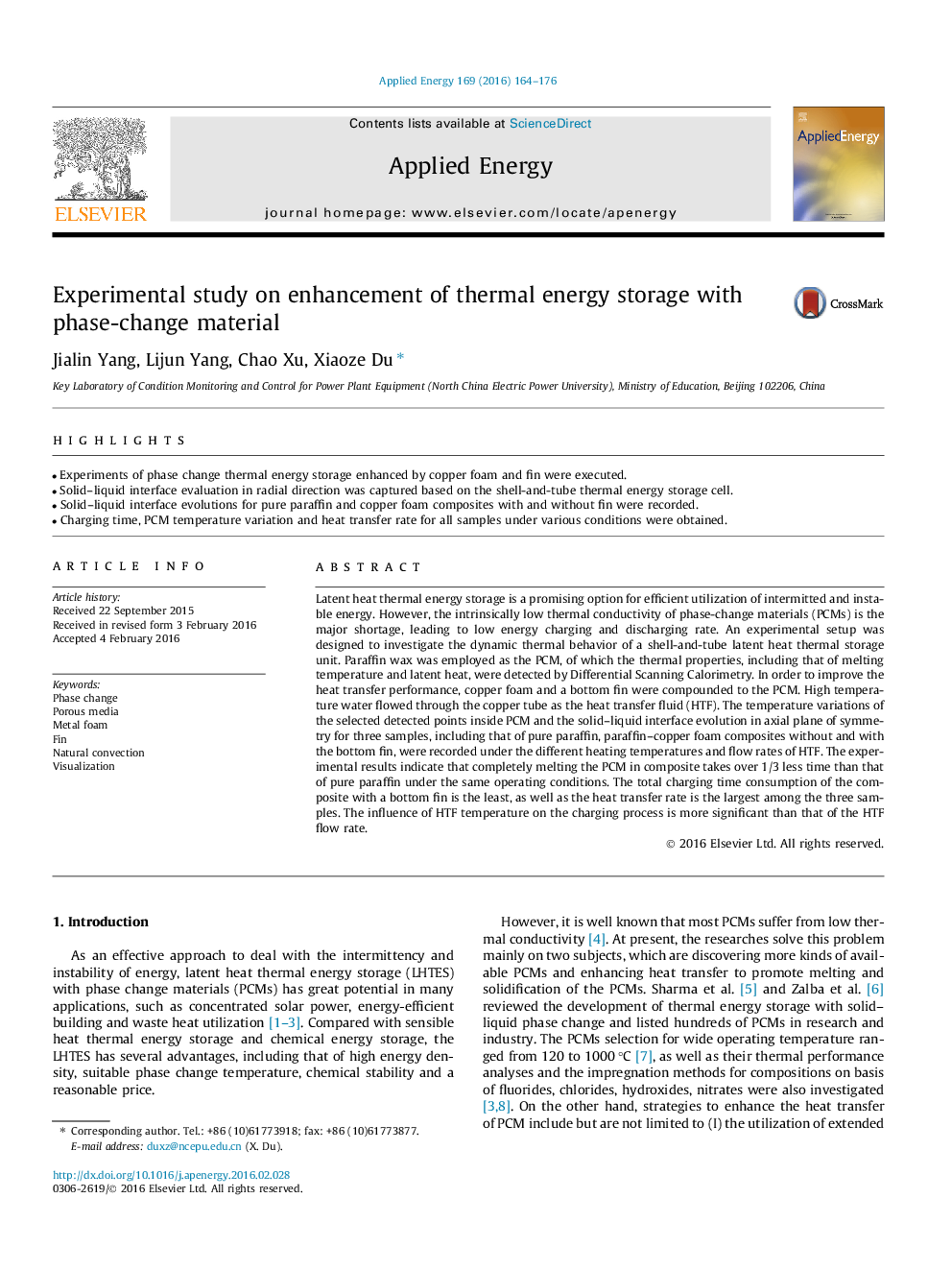| Article ID | Journal | Published Year | Pages | File Type |
|---|---|---|---|---|
| 6683455 | Applied Energy | 2016 | 13 Pages |
Abstract
Latent heat thermal energy storage is a promising option for efficient utilization of intermitted and instable energy. However, the intrinsically low thermal conductivity of phase-change materials (PCMs) is the major shortage, leading to low energy charging and discharging rate. An experimental setup was designed to investigate the dynamic thermal behavior of a shell-and-tube latent heat thermal storage unit. Paraffin wax was employed as the PCM, of which the thermal properties, including that of melting temperature and latent heat, were detected by Differential Scanning Calorimetry. In order to improve the heat transfer performance, copper foam and a bottom fin were compounded to the PCM. High temperature water flowed through the copper tube as the heat transfer fluid (HTF). The temperature variations of the selected detected points inside PCM and the solid-liquid interface evolution in axial plane of symmetry for three samples, including that of pure paraffin, paraffin-copper foam composites without and with the bottom fin, were recorded under the different heating temperatures and flow rates of HTF. The experimental results indicate that completely melting the PCM in composite takes over 1/3 less time than that of pure paraffin under the same operating conditions. The total charging time consumption of the composite with a bottom fin is the least, as well as the heat transfer rate is the largest among the three samples. The influence of HTF temperature on the charging process is more significant than that of the HTF flow rate.
Related Topics
Physical Sciences and Engineering
Energy
Energy Engineering and Power Technology
Authors
Jialin Yang, Lijun Yang, Chao Xu, Xiaoze Du,
